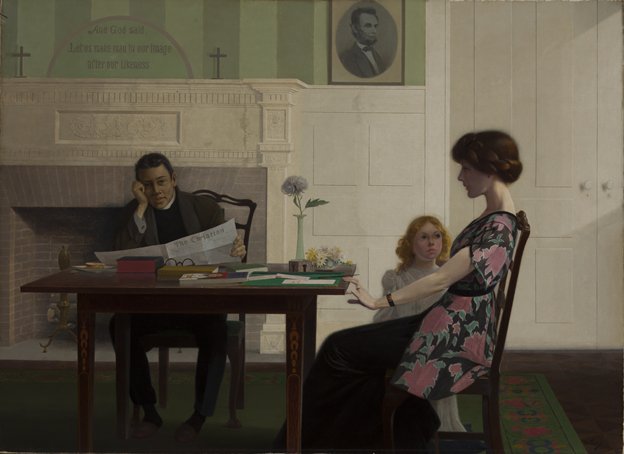Harry Willson Watrous (1857–1940) was an American painter, best known for his landscapes, still-life and genre pictures. He was born in San Francisco to wealthy parents who raised him primarily in New York and encouraged his exposure to an emerging class of patrons and a community of other artists. He obtained an academic style of instruction in France at the Académie Julian and in the studio of Léon Bonnat (1833-1922). At 30 he married Elizabeth Snowden Nichols (1858-1921), an author and artist who had studied in Paris herself, under Charles Carolus-Duran. They lived together, childless, in New York with his mother through her death at 88 in 1914. Watrous achieved renown as a specialist in cleverly composed small genre pictures. Then, due to an illness of the eye in 1905, from necessity he created larger pictures, many of them landscapes inspired by his friend Ralph Blakelock (1847-1919). He also depicted beautiful young women posed in settings of ambiguous narrative. After the death of his wife Watrous began the final phase of his career, carefully composing still-life paintings rich in color and obsessive detail. He died in New York, alone but celebrated, and is now almost completely forgotten. The Drop Sinister is his most-recognized work, often described as the first American depiction of an interracial family. Under circumstances now lost to history he donated it to the Portland Museum of Art shortly after the museum opened; it is now one of the best-loved works in the museum’s collection – both by visitors and staff.
%20(1).png)
%20(1).png)






